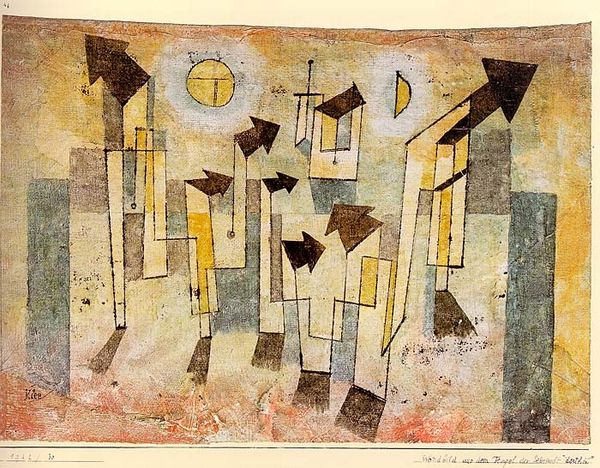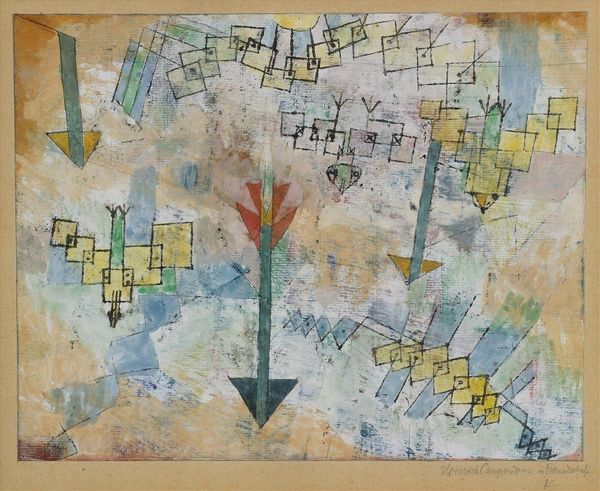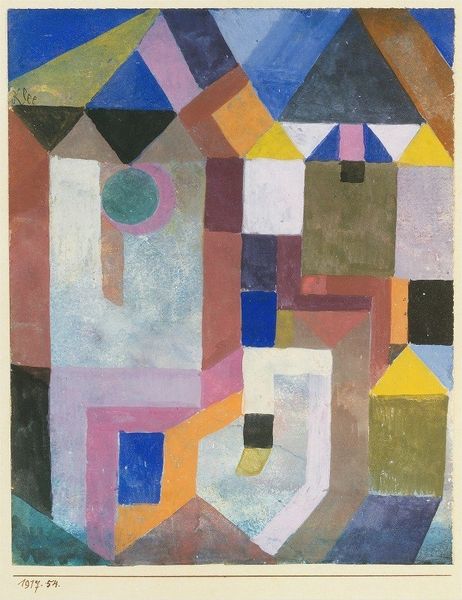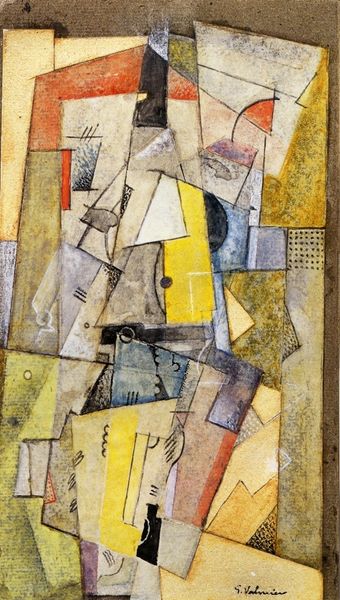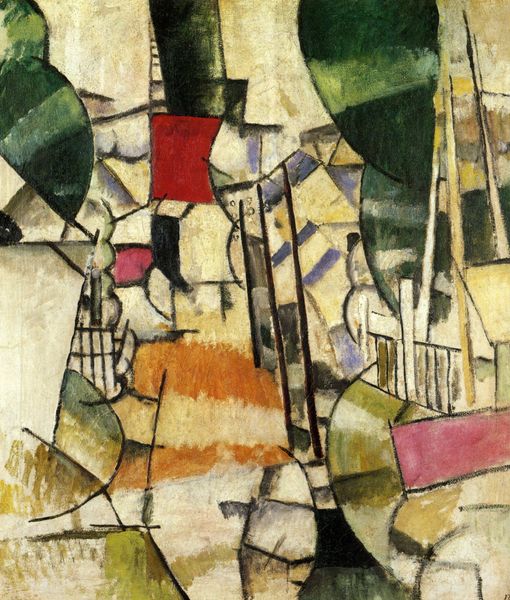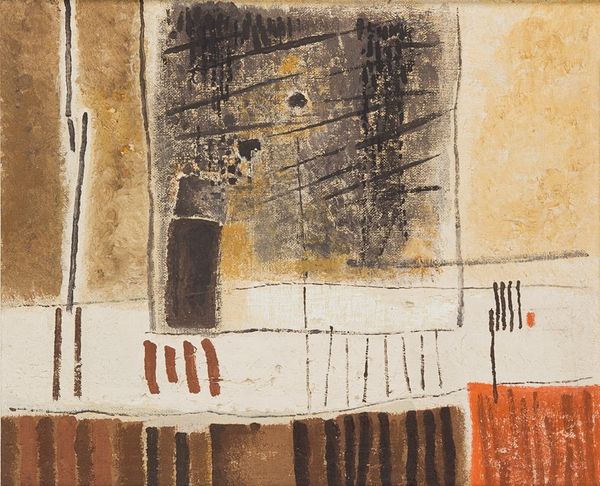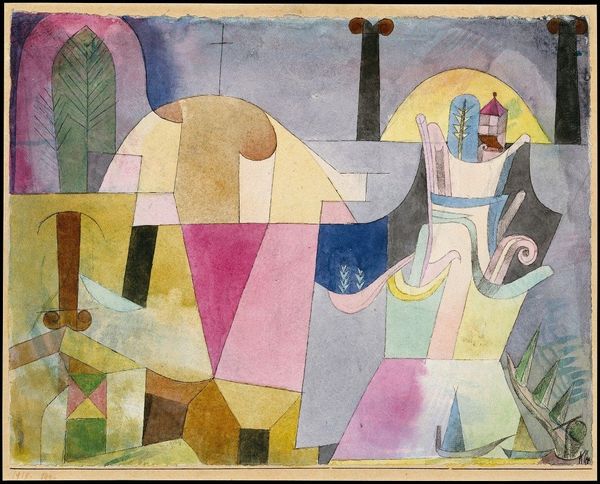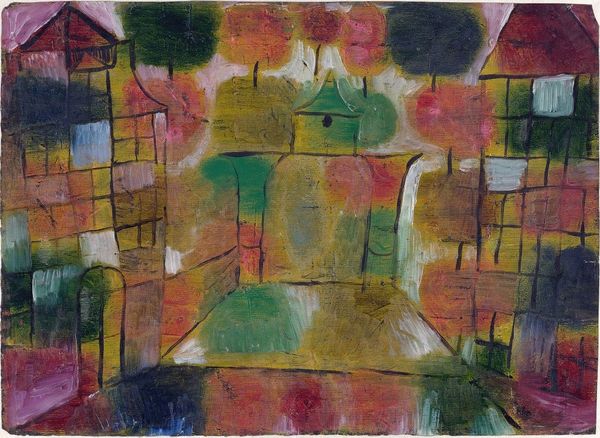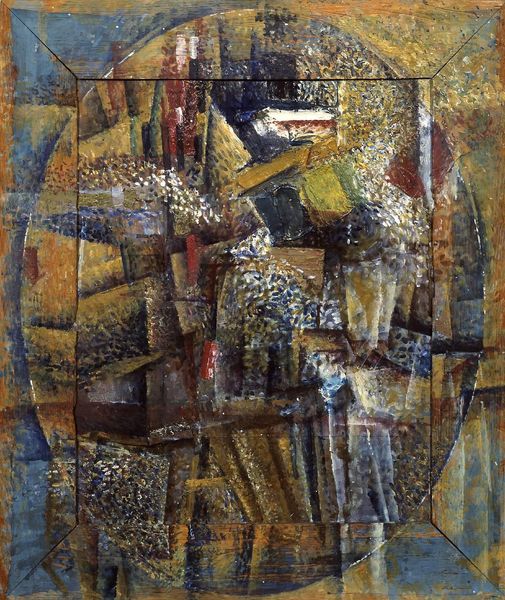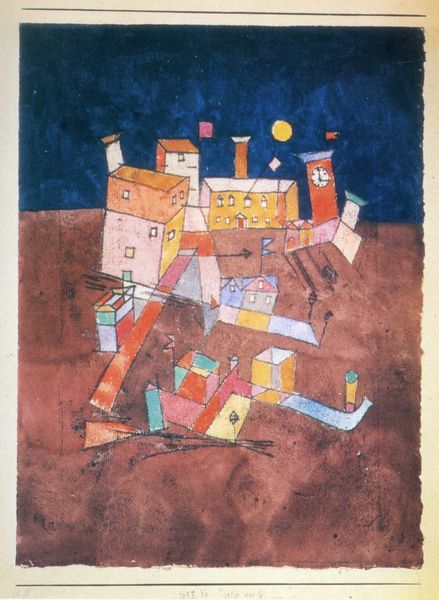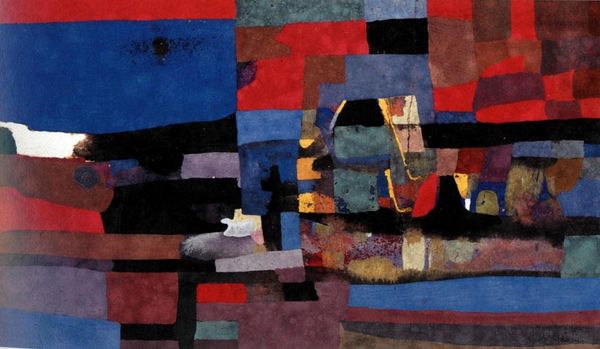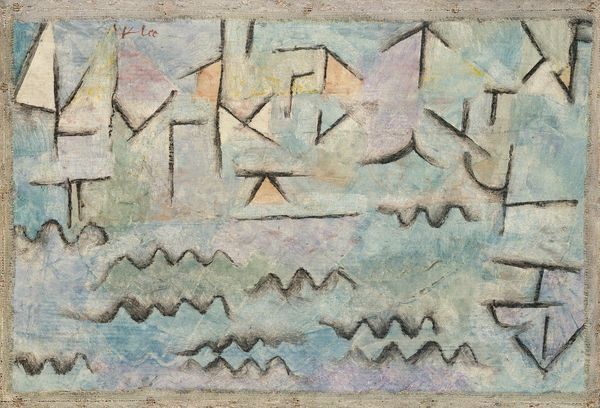
Copyright: Public Domain: Artvee
Curator: Today, we're looking at Paul Klee’s “Mural from the Temple of Longing," a mixed-media piece dating back to 1922. Editor: My immediate impression is of disorientation—these ambiguous, geometric shapes almost float on the canvas, propelled upwards like misguided rockets. Curator: Klee, working during a period of immense social and political upheaval in post-World War I Germany, was deeply influenced by expressionism. This work reflects a search for spiritual solace amidst chaos, presenting longing as a journey. The directional arrows might represent desires, ambitions, or the collective aspirations of a generation grappling with disillusionment. Editor: The subtle gradations of colour, combined with the strong directional lines create a compelling tension. I find that the work itself suggests a striving upwards toward the transcendent, without losing itself to pure representation. I see how Klee balanced line and color. Curator: Indeed. This echoes his exploration of colour theory and its relationship to musical composition—the abstract elements function like a symphony, building harmonic and dissonant structures of meaning. Editor: Klee masterfully uses layering to establish depth without solidity, and it reminds us of Klee’s Bauhaus teaching. I mean, consider the spatial ambiguity created by these semi-transparent planes. Is it a journey, or a mirage? Curator: And, the title itself, “Mural from the Temple of Longing”, seems laced with the historical contexts. A 'temple' indicates both individual and communal hopes and expectations in times of societal transition. His piece suggests a tension between private and public yearnings of the time. Editor: On closer inspection, I can sense that he creates something quite compelling here, by not filling space, instead offering subtle formal juxtapositions that beckon to our deeper selves. Curator: Yes, and I see his invitation for us to grapple with questions of selfhood, belonging, and perhaps most significantly, the nature of human aspiration when confronted by larger-than-life events. Editor: I will remember that. Klee’s ability to distil complex feelings into deceptively simple visual forms stays with you.
Comments
No comments
Be the first to comment and join the conversation on the ultimate creative platform.
